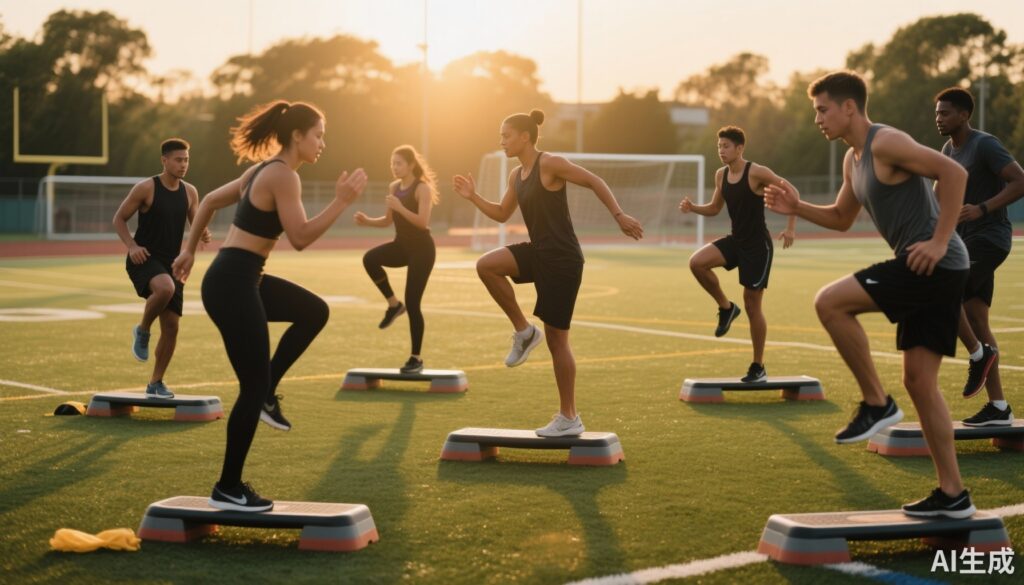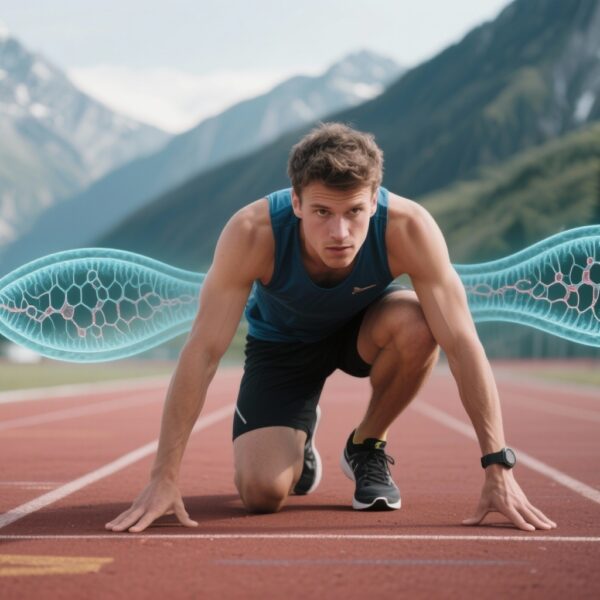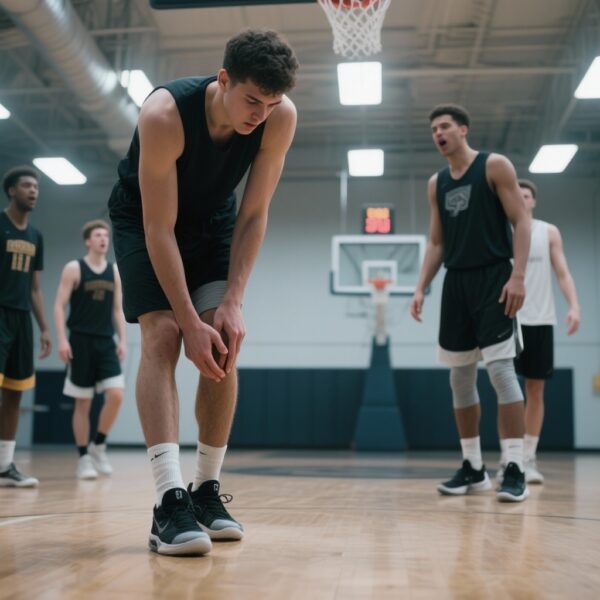Highlights
– A recent meta-analysis (Shi et al., 2025) pooled 13 studies and reports a large overall effect of neuromuscular training on athlete balance (SMD 1.47; 95% CI 0.78–2.16).
– Benefits were observed for static balance (SMD 1.90) and dynamic balance (SMD 1.30), suggesting broad applicability across balance domains.
– The evidence supports integrating neuromuscular components into routine athletic conditioning for performance enhancement and injury risk reduction, but heterogeneity, variations in protocols, and limited sample sizes temper certainty.
Background
Balance ability—encompassing static postural control and dynamic stability during movement—is a cornerstone of athletic performance and a modifiable risk factor for many lower-limb injuries. Neuromuscular training (NMT) refers to structured programs that combine strength, plyometrics, agility, proprioceptive, and balance-specific exercises to improve sensorimotor control. In sports medicine and coaching, NMT has been promoted as a practical intervention to reduce injury incidence (for example, the FIFA 11+ contains many NMT elements) and to enhance on-field performance.
Despite broad adoption, quantifying the magnitude of NMT effects specifically on balance—and determining which contexts and athlete subgroups benefit most—has been challenging because of heterogeneous study designs, varied outcome measures (Y-Balance Test, Star Excursion Balance Test, postural sway metrics), and inconsistent comparator programs.
Study Design
The meta-analysis by Shi et al. (published online 2025) followed PRISMA guidelines and was prospectively registered in PROSPERO (CRD42023433674). The authors searched international and Chinese databases through 23 August 2024 (including PubMed, Web of Science, Embase, Cochrane Library, CNKI, and CBM). After screening 7,254 records, 13 eligible studies were included. Key design features reported:
- Population: Athletes across sports (age ranges and competitive levels varied between studies).
- Intervention: Neuromuscular training programs that incorporated balance, proprioceptive, strength, core, and plyometric elements; program dose and duration varied by study.
- Comparator: Traditional training (sport-specific practice, general conditioning) or no additional balance-focused training.
- Outcomes: Pre–post measures of balance; 12 studies contributed dynamic-balance data and 5 contributed static-balance data. Many studies used validated functional tests (e.g., SEBT/YBT) or instrumented postural sway measurements.
- Analysis: Random-effects meta-analysis using RevMan 5.4, meta-regression evaluating intervention duration, sex, and age as moderators, and assessment of publication bias using funnel plots plus Egger’s and Begg’s tests.
Key Findings
The pooled results from Shi et al. are notable for magnitude and consistency across balance domains:
- Overall balance ability: SMD 1.47 (95% CI 0.78–2.16; p < 0.0001) favoring neuromuscular training over traditional training.
- Static balance: SMD 1.90 (95% CI 0.24–3.57), indicating large improvements in measures of quiet-stance control and postural sway.
- Dynamic balance: SMD 1.30 (95% CI 0.54–2.05), reflecting gains in reach-based tasks, single-leg hopping control, and other functional stability tests.
These standardized mean differences (SMDs) correspond to large effect sizes by conventional interpretation (Cohen’s d: 0.8 = large), suggesting clinically meaningful gains after NMT interventions. The analyses used a random-effects model—appropriate given expected clinical and methodological heterogeneity across trials.
Secondary analyses and bias assessment
Shi et al. also ran meta-regression to explore whether intervention duration, participant sex, and age moderated outcomes; details on the direction and statistical significance of these moderators were not emphasized in the summary provided here, and results should be consulted in the original paper for subgroup specifics. Publication bias was assessed with funnel plots and formal tests (Egger’s and Begg’s); the authors reported these assessments but the summary in this brief does not present exact p-values or adjusted estimates.
Interpretation of effect sizes and clinical relevance
Large SMDs across balance outcomes imply meaningful improvements in neuromuscular control that could translate into better athletic performance (e.g., improved change-of-direction, landing control) and reduced injury risk—particularly for non-contact lower-limb injuries that are often linked to poor dynamic stability and suboptimal motor patterns. However, translating SMDs to exact improvements on specific tests (e.g., centimeters of reach on the Y-Balance Test or seconds of postural sway) requires access to pooled raw-score data, which varies between studies.
Expert Commentary and Mechanistic Rationale
Why does neuromuscular training work? NMT targets multiple elements of the sensorimotor system: it enhances proprioceptive acuity, strengthens stabilizing musculature (hip abductors, external rotators, core muscles), and refines anticipatory and reactive neuromotor strategies. These adaptations reduce aberrant joint loading (for instance, dynamic knee valgus during landing) and improve coordinated muscle activation patterns needed for complex sport tasks.
From a translational perspective, clinicians and coaches should consider several practical points:
- Incorporate progressive NMT elements across pre-season and in-season warm-ups. Programs that mix balance/proprioception, strength, plyometrics, and agility yield complementary benefits.
- Prioritize exercise quality (technique, controlled progression) over sheer volume. Good motor learning principles—feedback, variability, and incremental challenge—support durable gains.
- Tailor components to sport demands and athlete baseline status. For example, single-leg dynamic control drills may be emphasized for basketball players, while rapid deceleration and change-of-direction drills may be prioritized for soccer players.
Clinical and guideline context: Neuromuscular elements are embedded within evidence-based injury-prevention programs (e.g., FIFA 11+) that have demonstrated reductions in injury rates in randomized trials (Soligard et al., BMJ 2008). Systematic reviews of warm-up and NMT strategies (Herman et al., BMC Med 2012) similarly support the effectiveness of multifaceted NMT in reducing lower-limb injuries and improving functional outcomes.
Limitations and Areas of Uncertainty
While the pooled effects are encouraging, several limitations should temper interpretation and guide future research:
- Heterogeneity in interventions: Studies used different combinations of balance, strength, and plyometric exercises, delivered at varying frequencies and durations. This variation complicates identification of the optimal “dose” or key components.
- Outcome heterogeneity: A mixture of functional tests and instrumented measures were used, each with different sensitivity and sport-relevance. Some tests emphasize reach, others postural sway; pooled SMDs mask these nuances.
- Study quality and bias: Behavioral training trials are difficult to blind, and small-study effects can inflate effect sizes. Although publication-bias assessments were performed, the potential for selective reporting and underpowered trials remains.
- Generalisability: The meta-analysis included athletes across ages and sports, but subgroup effects by competitive level (elite vs amateur), sport type, or injury history require further study.
- Link to injury outcomes: While improved balance plausibly reduces injury risk, direct evidence that the specific NMT programs studied here reduce clinically important injury rates was not the primary endpoint of the balance-focused trials pooled in this meta-analysis.
Clinical Implications and Practical Recommendations
Based on the meta-analytic findings and existing programmatic evidence, clinicians, athletic trainers, and coaches can reasonably:
- Integrate neuromuscular training components (balance/proprioception, strength, plyometrics, core stability) into routine warm-ups and conditioning sessions, aiming for at least 2–3 sessions per week when feasible.
- Emphasize progression and movement quality: progress from bilateral to unilateral tasks, from stable to unstable surfaces, and from slow controlled movements to fast sport-specific perturbations.
- Monitor outcomes with sport-appropriate functional tests (e.g., Y-Balance Test, Star Excursion Balance Test) to track improvement and guide progression.
- Consider NMT as one element of a comprehensive injury-prevention strategy that includes workload management, footwear, and sport-specific technique training.
Future Research Priorities
To refine recommendations and strengthen the evidence base, future studies should:
- Standardize key intervention components and reporting (frequency, intensity, progression) to support dose–response analyses.
- Use larger, adequately powered randomized trials with pre-specified balance and injury endpoints and longer follow-up to test durability and real-world injury reduction.
- Report raw-score changes on common balance tests to facilitate clinical interpretation of SMDs.
- Test implementation strategies that promote adherence in diverse athletic settings and measure cost-effectiveness.
Conclusion
Shi et al.’s 2025 meta-analysis provides compelling evidence that neuromuscular training produces large improvements in athletes’ balance—affecting both static and dynamic domains. These findings bolster the rationale for embedding NMT into athlete preparation and injury-prevention programs. However, heterogeneity of protocols and outcomes, the small number of included studies for some endpoints, and typical behavioral trial limitations mean that practitioners should apply NMT thoughtfully, monitor athlete response, and support further high-quality research to refine optimal content and dosage.
Funding and clinicaltrials.gov
The published meta-analysis reported PROSPERO registration (CRD42023433674). Funding sources for the meta-analysis were not specified in the summary provided here; readers should consult the original paper for funding disclosures. No specific clinicaltrials.gov registrations were reported for the pooled studies in the summary provided.
References
Shi K, Xiang M, Shi H, Duan R. Effects of Neuromuscular Training on Athletes’ Balance Ability: A Meta-Analysis. Sports Med. 2025 Oct 27. doi: 10.1007/s40279-025-02335-x. Epub ahead of print. PMID: 41144223.
Soligard T, Myklebust G, Steffen K, et al. Comprehensive warm-up programme to prevent injuries in young female footballers: cluster randomised controlled trial. BMJ. 2008;337:a2469.
Herman K, Barton C, Malliaras P, Morrissey D. The effectiveness of neuromuscular warm-up strategies, that require no additional equipment, for preventing lower limb injuries during sports participation: a systematic review. BMC Med. 2012;10:75.



